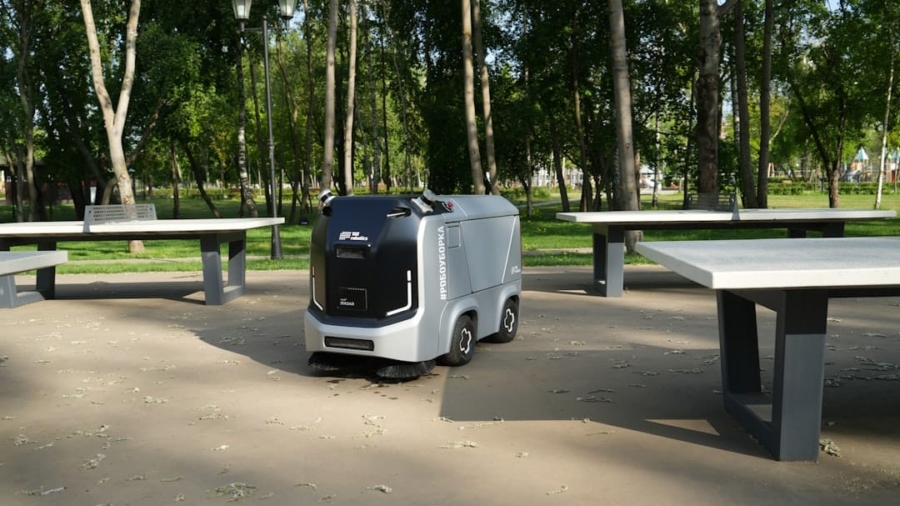Human exploration of space has been a remarkable journey, marked by significant achievements and milestones. However, it is not without its limitations. One of the most pressing constraints is the physical and psychological toll that long-duration space missions can impose on astronauts.
The human body is not designed for the harsh conditions of space, where exposure to microgravity can lead to muscle atrophy, bone density loss, and various other health issues. For instance, astronauts aboard the International Space Station (ISS) have reported changes in vision and cardiovascular function after extended stays in microgravity. These physiological challenges necessitate extensive training and preparation, which can limit the duration and scope of human missions.
Astronauts face isolation, confinement, and the stress of operating in a high-stakes environment far from Earth. The mental health implications of such conditions can be profound, leading to anxiety, depression, and interpersonal conflicts among crew members.
The need for social interaction and the effects of prolonged separation from loved ones can weigh heavily on astronauts’ minds. These factors contribute to the complexity of planning human missions to distant planets, where the journey could last several months or even years. As a result, while human exploration has provided invaluable insights into our universe, it is inherently limited by biological and psychological constraints.
Key Takeaways
- Human exploration of space is limited by factors such as the human body’s vulnerability to radiation and the high cost of sending humans to other planets.
- AI robotics play a crucial role in space exploration by performing tasks too dangerous or difficult for humans, such as collecting samples from hazardous environments.
- Using AI robotics for planetary exploration offers advantages such as increased efficiency, reduced risk to human life, and the ability to work in extreme environments.
- Challenges of implementing AI robotics in space exploration include the need for advanced technology, potential malfunctions, and the ethical considerations of autonomous decision-making.
- Examples of AI robotics in planetary exploration include the Mars rovers, which have successfully conducted experiments and collected data on the Martian surface.
- The future potential of AI robotics in space exploration includes the possibility of autonomous spacecraft and robots working together to explore and colonize other planets.
- Ethical considerations of AI robotics in planetary exploration include the potential for autonomous robots to make decisions that could impact the environment or other life forms.
- In conclusion, the importance of AI robotics for exploring other planets is evident in their ability to overcome the limitations of human exploration and pave the way for future discoveries in space.
The Role of AI Robotics in Space Exploration
In light of the limitations associated with human exploration, artificial intelligence (AI) and robotics have emerged as pivotal tools in advancing our understanding of space. AI robotics can operate in environments that are inhospitable to humans, such as the surface of Mars or the icy moons of Jupiter and Saturn. These machines are designed to withstand extreme temperatures, radiation levels, and other harsh conditions that would be detrimental to human life.
By deploying AI-driven robots, space agencies can gather data and conduct experiments in locations that would otherwise be inaccessible. The integration of AI into robotic systems enhances their capabilities significantly. For example, AI algorithms enable robots to process vast amounts of data in real-time, allowing them to make autonomous decisions based on their surroundings.
This autonomy is crucial for missions where communication delays with Earth can hinder timely responses to unforeseen challenges. Robots equipped with AI can navigate complex terrains, identify geological features of interest, and even conduct scientific experiments without direct human intervention. This capability not only increases the efficiency of missions but also expands the potential for exploration beyond what is feasible for human crews.
Advantages of Using AI Robotics for Planetary Exploration

The advantages of employing AI robotics in planetary exploration are manifold. One significant benefit is cost-effectiveness. Robotic missions typically require fewer resources than human missions, as they do not necessitate life support systems, extensive training for crew members, or the infrastructure needed to ensure astronaut safety.
For instance, NASA’s Mars rovers, such as Curiosity and Perseverance, have been able to conduct extensive scientific research at a fraction of the cost of sending humans to Mars. This financial efficiency allows space agencies to allocate resources toward multiple missions simultaneously, thereby accelerating our exploration efforts. Another advantage lies in the ability of AI robotics to operate continuously without the need for rest or recovery periods.
While human astronauts require sleep and downtime to maintain their physical and mental health, robots can work around the clock, collecting data and performing tasks without interruption. This continuous operation maximizes the scientific return on investment for each mission. Additionally, AI robotics can be designed to adapt to changing conditions on other planets.
For example, if a rover encounters an unexpected obstacle or a new area of interest, it can adjust its path or focus its sensors accordingly, ensuring that valuable opportunities for discovery are not missed.
Challenges of Implementing AI Robotics in Space Exploration
Despite the numerous advantages that AI robotics offer for space exploration, several challenges must be addressed to fully realize their potential. One major hurdle is the development of robust AI systems capable of functioning autonomously in unpredictable environments. Space is inherently chaotic; dust storms on Mars or sudden changes in terrain can pose significant risks to robotic missions.
Ensuring that AI systems can accurately interpret sensory data and make sound decisions in real-time is a complex engineering challenge that requires extensive testing and validation. Moreover, there are technical limitations related to communication between Earth and robotic systems in space. While advancements in satellite technology have improved data transmission rates, there remains a significant delay when sending commands to distant planets.
For example, a signal sent from Earth to Mars can take anywhere from 4 to 24 minutes to arrive, depending on their relative positions in their orbits. This delay complicates remote operation and necessitates a high degree of autonomy for robots operating far from Earth. Developing algorithms that allow robots to function effectively with minimal human oversight is essential but remains an ongoing area of research.
Examples of AI Robotics in Planetary Exploration
Several notable examples illustrate the successful application of AI robotics in planetary exploration. NASA’s Mars rovers are perhaps the most prominent instances of this technology in action. The Curiosity rover, which landed on Mars in 2012, is equipped with an array of scientific instruments and AI capabilities that allow it to analyze soil samples and assess environmental conditions autonomously.
Curiosity has made groundbreaking discoveries about Mars’ past habitability and has provided insights into its geological history. More recently, NASA’s Perseverance rover has taken AI robotics a step further by incorporating advanced machine learning algorithms that enable it to navigate Martian terrain more effectively than its predecessors. Perseverance is also tasked with collecting samples that may one day be returned to Earth for analysis, showcasing how AI robotics can play a crucial role in future sample-return missions.
Additionally, the European Space Agency’s (ESA) ExoMars rover is designed to search for signs of past life on Mars using AI-driven analysis tools that enhance its ability to identify organic compounds.
Future Potential of AI Robotics in Space Exploration

The future potential of AI robotics in space exploration is vast and exciting. As technology continues to advance, we can expect even more sophisticated robotic systems capable of conducting complex tasks on other planets. One area of development is the use of swarms of small robots that can work collaboratively to explore planetary surfaces.
These swarms could cover larger areas more efficiently than a single large rover by sharing data and coordinating their movements autonomously. Furthermore, advancements in AI could lead to robots that possess enhanced learning capabilities, allowing them to adapt their strategies based on previous experiences during missions. This could enable them to optimize their operations over time, improving their efficiency and effectiveness as they gather data from diverse environments.
The prospect of deploying AI robotics on moons like Europa or Enceladus—where subsurface oceans may harbor extraterrestrial life—opens up new avenues for exploration that were previously unimaginable.
Ethical Considerations of AI Robotics in Planetary Exploration
As we increasingly rely on AI robotics for planetary exploration, ethical considerations must be addressed. One significant concern revolves around the potential for contamination of other celestial bodies by Earth-based organisms carried by robotic missions. The planetary protection protocols established by space agencies aim to prevent biological contamination that could compromise scientific investigations into extraterrestrial life or disrupt existing ecosystems on other planets.
Additionally, there are ethical implications related to decision-making processes within AI systems used in exploration missions. As robots become more autonomous, questions arise about accountability when they encounter unforeseen circumstances or make decisions that could impact mission outcomes or safety protocols. Establishing clear guidelines for how these systems should operate and who is responsible for their actions will be crucial as we move forward with increasingly autonomous robotic explorers.
The Importance of AI Robotics for Exploring Other Planets
The integration of AI robotics into space exploration represents a transformative shift in our approach to understanding the cosmos. By overcoming the limitations associated with human exploration—such as health risks and psychological challenges—AI-driven robots enable us to explore environments that would otherwise remain inaccessible. Their ability to operate autonomously and continuously enhances our capacity for scientific discovery while reducing costs associated with human missions.
As we look toward the future, the potential applications of AI robotics are boundless. From swarming robotic systems capable of collaborative exploration to advanced learning algorithms that adapt based on experience, these technologies will play an essential role in our quest to uncover the mysteries of other planets. However, as we embrace these advancements, we must also navigate the ethical considerations they entail to ensure responsible exploration practices.
In summary, AI robotics are not merely tools; they are essential partners in our journey beyond Earth. Their contributions will shape our understanding of the universe and pave the way for future generations to explore new worlds with unprecedented depth and insight.
In the quest to explore other planets, AI robotics play a crucial role in overcoming the challenges posed by distant and harsh extraterrestrial environments. These advanced technologies enable autonomous navigation, data collection, and analysis, which are essential for successful space missions.
” This article, available at Exploring the Features of the Samsung Galaxy Book Odyssey, highlights the cutting-edge features of Samsung’s latest laptop, showcasing how innovation in technology continues to push boundaries, much like AI robotics in space exploration.
FAQs
What are AI robotics?
AI robotics are a combination of artificial intelligence and robotics, where machines are programmed to perform tasks autonomously using advanced algorithms and sensors.
Why are AI robotics important for exploring other planets?
AI robotics are important for exploring other planets because they can be used to perform tasks in environments that are too dangerous or inhospitable for humans. They can also operate for extended periods of time without human intervention, making them ideal for long-term missions to other planets.
How do AI robotics contribute to space exploration?
AI robotics contribute to space exploration by conducting scientific experiments, collecting samples, and performing maintenance tasks on spacecraft and planetary surfaces. They can also be used to scout and map out terrain, as well as assist in the construction of infrastructure for future human missions.
What are some examples of AI robotics used in space exploration?
Examples of AI robotics used in space exploration include the Mars rovers, such as Curiosity and Perseverance, which are equipped with AI capabilities to navigate and make decisions autonomously on the Martian surface. Additionally, robotic arms and manipulators are used on spacecraft to handle delicate tasks, such as deploying and repairing equipment.
What are the challenges of using AI robotics for space exploration?
Challenges of using AI robotics for space exploration include the need for robust and reliable communication systems, as well as the development of AI algorithms that can adapt to unpredictable and harsh environments. Additionally, ensuring the safety and ethical use of AI robotics in space is a key consideration for future missions.

